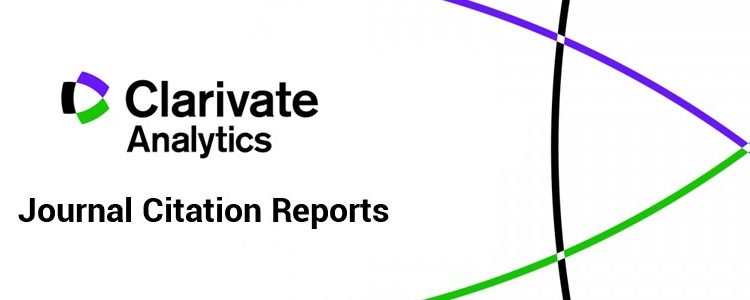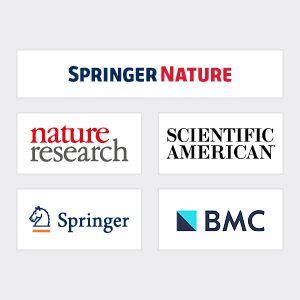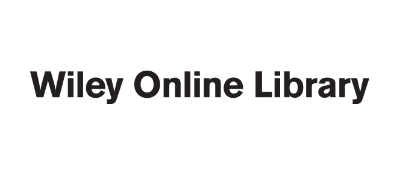Scientific publishers, scholarly impact and citation analysis
Table of Contents
Begin with some companies
1. Thomson Reuters

Thomson Reuters Corporation is Canada-based multinational media corporation. The company was founded in Toronto, Ontario, Canada, where it is headquartered at the Bay Adelaide Centre.
Thomson Reuters was created by the Thomson Corporation’s purchase of the British company Reuters Group in April 2008.
2. Clarivate
Clarivate is a company formed in 2016, following the acquisition of Thomson Reuters’ Intellectual Property and Science Business by Onex Corporation and Baring Private Equity Asia.
Clarivate (formerly Clarivate Analytics) was formerly the Intellectual Property and Science division of Thomson Reuters. Before 2008, it was known as Thomson Scientific. In 2016, Thomson Reuters struck a $3.55 billion deal in which they spun it off into an independent company, and sold it to private-equity firms Onex Corporation and Baring Private Equity Asia.
Clarivate owns and operates a collection of subscription-based services focused largely on analytics. The services include Web of Science, EndNote, InCites/JCR, etc.
2.1 Web of Science
Web of Science and Scopus are the largest worldwide-used citation databases1. Today, these are the most respected platforms for analysing peer-reviewed literature: scientific publications, conference proceedings, and books.
Scopus is Elsevier’s abstract and citation database launched in 2004.
The Web of Science Core Collection consists of six online databases:
Science Citation Index Expanded (SCIE) covers more than 8,500 notable journals encompassing 150 disciplines. Coverage is from the year 1900 to the present day.
Social Sciences Citation Index (SSCI) covers more than 3,000 journals in social science disciplines. Range of coverage is from the year 1900 to the present day.
Arts & Humanities Citation Index covers more than 1,700 arts and humanities journals starting from 1975. In addition, 250 major scientific and social sciences journals are also covered.
Emerging Sources Citation Index covers over 5,000 journals in the sciences, social science, and humanities.
Book Citation Index covers more than 60,000 editorially selected books starting from 2005.
Conference Proceedings Citation Index (CPCI) covers more than 160,000 conference titles in the Sciences starting from 1990 to the present day.
2.2 Journal Citation Reports

Clarivate publishes the annual Journal Citation Reports (JCR), which identifies the world’s most impactful academic journals included in the Science Citation Index Expanded and Social Sciences Citation Index, part of the Web of Science Core Collection.
2.2.1 Journal Impact Factor
An offshoot of citation analysis is Journal Impact Factor (JIF) which is used to sort or rank journals by their relative importance. The underlying assumption behind Impact Factors (IF) is that journals with high IF publish articles that are cited more often than journals with lower IF.
Impact factors may be used by:
- Authors to decide where to submit an article for publication.
- Libraries to make collection development decisions
- Academic departments to assess academic productivity
- Academic departments to make decisions on promotion and tenure.
How is the Journal Impact Factor Calculated?
Thomson defines impact factor as, “The journal Impact Factor is the average number of times articles from the journal published in the past two years have been cited in the JCR year. The Impact Factor is calculated by dividing the number of citations in the JCR year by the total number of articles published in the two previous years. An Impact Factor of 2.5 means that, on average, the articles published one or two year ago have been cited two and a half times. Citing articles may be from the same journal; most citing articles are from different journals.”
JIF without self citations is calculated by subtracting self citations in the last two years.
Factors to Consider While Consulting Impact Factors
Publication Date: The impact factor is based on citation frequency of articles from a journal in their first few years of publication. This does not serve well the journals with articles that get cited over a longer period of time (let’s say, 10 years) rather than immediately. In other words, journals in rapidly expanding fields such as cell biology and computing tend to have much higher immediate citation rates leading to higher IFs than journals in fields like Education or Economics.
Journal Impact Factor not Article Impact Factor: Citations to articles in a journal are not evenly distributed. In fact, some articles in a journal may not be cited at all but a few highly cited articles could lead to a high IF. Therefore, the IF does not accurately reflect the quality of individual articles published in a journal. Also, journals with more issues and articles can have higher Impact Factors which could be misleading as it does not really reflect the quality of articles.
Review Articles: Review articles (which tend to receive more citations), editorials, letters, and news items are not counted in article total but if cited are counted as citations for the journal. This leaves room for manipulation of ratio used to calculate impact factors leading to inflated impact factors in some cases.
Clinical Journals: Clinical journals usually have low citation counts. This puts such journals at a disadvantage with research journals in the field that have higher citation counts.
Uneven Coverage: The Journal Citation Reports focuses much more on disciplines where the primary means of publishing is through journal article. It provides less coverage to areas in Social Sciences and Humanities, where books and other publishing formats are more prevalent.
2.2.2 Journal Citation Indicator (JCI)
The average JCI in a category is 1. Journals with a JCI of 1.5 have 50% more citation impact than the average in that category.2.2.3 Cited Half-life
The Cited Half-Life is the median age of the citations received by a journal during the JCR year. For example, a 2015 Cited Half-Life value of 7.0 for Journal X means that half of the Journal X papers that were cited in 2015 were published in the last 7 years.
2.2.4 5 Year Impact Factor
The 5-year Impact Factor is the average number of times articles from the journal published in the past five years have been cited in the JCR year. It is calculated by dividing the number of citations in the JCR year by the total number of articles published in the five previous years.
2.2.5 Major difference between CiteScore and Journal Impact Factor
- CiteScore calculation is based on Scopus data, while Impact Factor is based on Web of Science data.
- CiteScore uses a 4-year window while Impact Factor adopts a 2-year window.
- CiteScore includes more document types indexed by Scopus, including articles, reviews, conference papers, data papers and book chapters; while Impact Factor only includes “citable documents” which are articles and reviews.
3. About Google Scholar Metrics
h-index
The number of papers (h) with a citation number ≥ h. Example: a scientist with an H-Index of 37 has at least 37 papers cited at least 37 times.
i10-Index
The number of publications with at least 10 citations.
Finally, the h5-index, h5-core, and h5-median of a publication are, respectively, the h-index, h-core, and h-median of only those of its articles that were published in the last five complete calendar years.
4. Elsevier

Elsevier (Dutch: [ˈɛlzəviːr]) is a Netherlands-based publishing company specializing in scientific, technical, and medical content. It is a part of the RELX Group, known until 2015 as Reed Elsevier. Its products include journals such as The Lancet and Cell, the ScienceDirect collection of electronic journals, the Trends and Current Opinion series of journals, the online citation database Scopus the SciVal tool for measuring research performance, the ClinicalKey search engine for clinicians, and the ClinicalPath evidence-based cancer care service.
4.1 ScienceDirect

ScienceDirect is a website which provides access to a large full-text database of scientific and medical publications of the Dutch publisher Elsevier. The access to the full-text requires subscription, while the bibliographic metadata is free to read.
4.2 Scopus

Scopus is Elsevier’s abstract and citation database launched in 2004. Scopus covers nearly 36,377 titles from approximately 11,678 publishers, of which 34,346 are peer-reviewed journals in top-level subject fields: life sciences, social sciences, physical sciences and health sciences. It covers three types of sources: book series, journals, and trade journals. All journals covered in the Scopus database are reviewed for sufficiently high quality each year according to four types of numerical quality measure for each title; those are h-Index, CiteScore, SJR (SCImago Journal Rank) and SNIP (Source Normalized Impact per Paper). Searches in Scopus also incorporate searches of patent databases.
5. Springer Nature

Springer Nature or the Springer Nature Group is a German-British academic publishing company created by the May 2015 merger of Springer Science+Business Media and Holtzbrinck Publishing Group’s Nature Publishing Group2, Palgrave Macmillan, and Macmillan Education.
The following major brands belong to the group (also subsidiaries):
- Nature (journal)
- Springer.com
- BioMed Central
- Scientific American
- Heinrich Vogel Verlag[23]
- SciGraph
Springer gets access to more than 2,900 journals and 300,000 books.
As of February 2020, Nature Research publishes 156 academic journals. Grouped by multidisciplinary journals(Nature(50), Nature Communications(15), Scientific Reports(4) and Scientific Data(6)), nature research journals(like Nature Climate Change(25)), nature review journals(like Nature Reviews Cancer), nature partner journals (prefix ’npj’ ) and other Nature Portfolio journals.
6. Wiley

John Wiley & Sons, Inc., commonly known as Wiley (/ˈwaɪli/), is an American multinational publishing company founded in 1807 (headquartered in Hobken, New Jersey) that focuses on academic publishing and instructional materials.
It convers more than 1600 journals and 22,000 online books.
7. Taylor & Francis

Taylor & Francis Group is an international company originating in England that publishes books and academic journals. It is a division of Informa plc, a United Kingdom–based publisher and conference company.
Taylor & Francis Online brings together over 2,700 journals, including the world’s largest program of Social Science and Humanities journals published by Routledge3.
Citation databases are databases that have been developed for evaluating publications. The citation databases enable you to count citations and check, for example, which articles or journals are the most cited ones. Note: None of the citation databases cover all publications. The coverage of different disciplines also varies greatly. Citation analysis and bibliometric indicators are based on citations and the amount of them. Citing in itself, however, is not a quality criterion and there can be many reasons for the citing (negative citations, ethnocentricity (/ˌeθnəʊˈsentrɪk/), self-citation). ↩︎
also called Nature Portfolio (formerly known as Nature Publishing Group and Nature Research). Nature Research’s flagship publication is Nature, a weekly multidisciplinary journal first published in 1869. ↩︎
Routledge (/ˈraʊtlɪdʒ/) is a British multinational publisher founded in 1836is and claimed to be the largest global academic publisher within humanities and social sciences. In 1998, Routledge became a subdivision of its former rival, Taylor & Francis Group (T&F). ↩︎